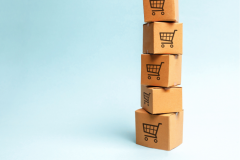Paper is back in favor with European consumers, beating out digital media. The bi-annual Trend Tracker survey conducted last January by the Toluna institute for the Two Sides association has just delivered its first results for Europe. Designed to track the evolution of consumer preferences and attitudes towards paper and print, this study has already put a smile on the faces of those involved in the graphic arts chain. Disgraced especially during the pandemic, print is back in favor.
"Despite the rise of online media and the widespread retreat from print communications during Covid 19, it's clear that many consumers still appreciate printed paper and have returned to their previous habits." points out Jonathan Tame, Managing Director of paper and print advocacy group Two Sides Europe.
The paper, the return!
Today, 65% of those surveyed prefer to turn the pages of a book, compared with 53% in 2021.
The sacrosanct magazine wins 51% of the vote, compared with 35% two years ago, as do newspapers and catalogs.
Even print advertising, which has been banned from letterboxes, managed to pick up a few extra points.
Bills and account statements, which are merely administrative documents, will double in two years, rising from 19% in 2021 to 38%.
Paper, an aid to learning and understanding
According to Two Sides, university studies have demonstrated the important role of print in education and the understanding of complex information.
The survey therefore gathered opinions on the benefits of reading on paper. To the postulate " i believe that children and students learn better by reading printed books and course materials rather than digital books and course materials." 52% of people agreed, compared with only 16% who disagreed or strongly disagreed . "I understand information better when I read the news on paper rather than online" received 45% positive responses, against 28% negative responses (disagree and strongly disagree).
This survey, the full analysis of which is still underway, reveals " a number of remarkable facts about print and the many benefits it has for citizens and consumers." as Jonathan Tame explains.










